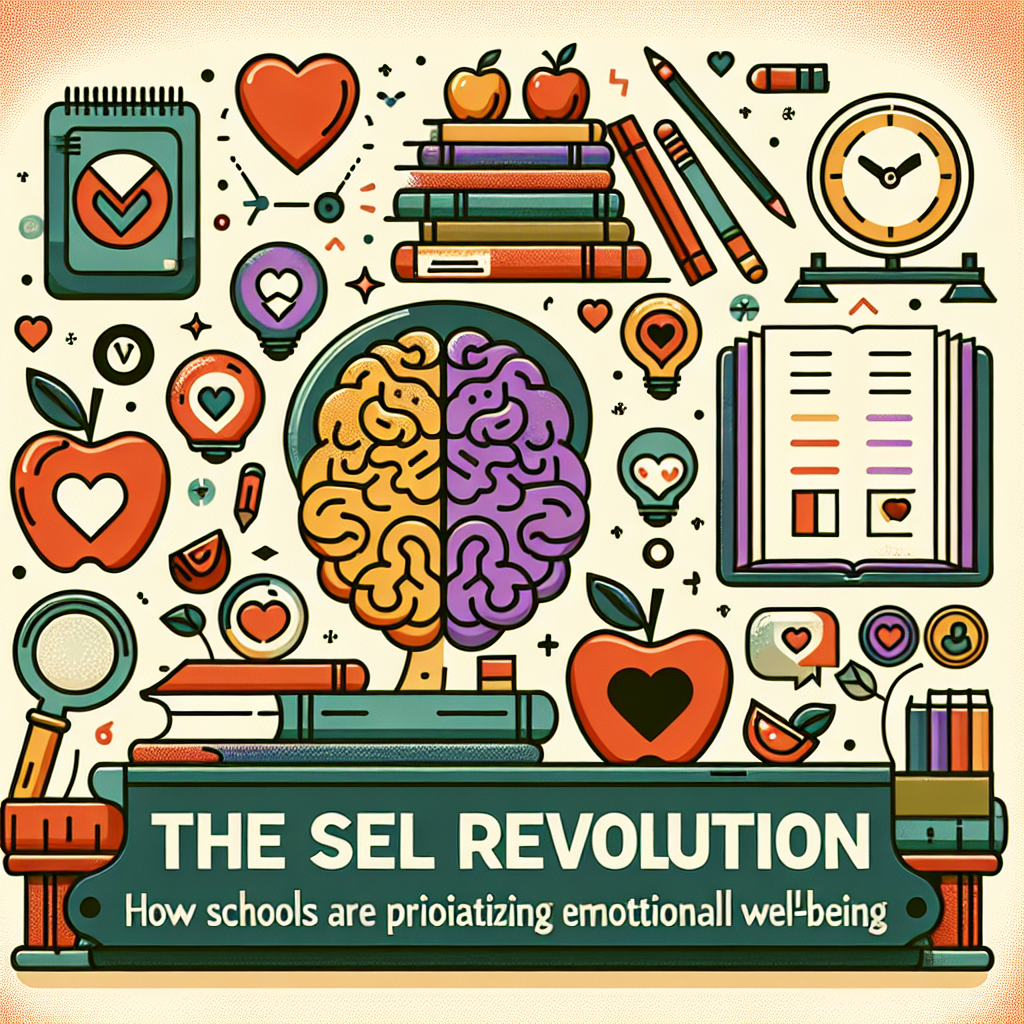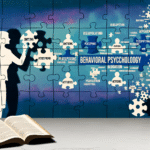
Introduction
In an ever-changing world characterized by rapid technological advancements, shifting socio-economic landscapes, and global challenges, one fundamental truth has emerged: emotional well-being cannot be overlooked. The SEL Revolution: How Schools Are Prioritizing Emotional Well-Being is reshaping educational systems with a profound focus on social and emotional learning (SEL). This movement is proving that fostering students’ emotional intelligence is not just a secondary goal but an essential pillar for holistic education. As educators and administrators increasingly recognize the importance of emotional health, we find ourselves at the forefront of a transformative revolution—one that promises to spearhead positive change in schools and the lives of students.
The Foundation of SEL: Understanding Emotional Well-Being
Defining Emotional Well-Being
Emotional well-being encompasses various aspects of mental health, including self-awareness, emotional regulation, and interpersonal skills. By integrating SEL into educational frameworks, schools are teaching students not only academic skills but also how to navigate their emotions and relationships effectively. This holistic approach lays a robust groundwork for lifelong success, extending beyond school into personal and professional realms.
The Core Competencies of SEL
The Collaborative for Academic, Social, and Emotional Learning (CASEL) outlines five core competencies that are vital to the SEL framework:
- Self-Awareness: Recognizing one’s emotions, strengths, weaknesses, and values.
- Self-Management: Regulating emotions and behaviors to achieve goals.
- Social Awareness: Understanding and empathizing with others from diverse backgrounds.
- Relationship Skills: Building and maintaining healthy relationships.
- Responsible Decision-Making: Making ethical, constructive choices about personal and social behavior.
These competencies form the backbone of the SEL Revolution: How Schools are Prioritizing Emotional Well-Being, illustrating the interconnected nature of academic and emotional growth.
The Rise of SEL in Schools
Historical Context
SEL initiatives started gaining traction in the 1990s as researchers began connecting emotional intelligence with academic success. Early adopters paved the way for widespread acknowledgment of the need for emotional education. However, it wasn’t until recent years that schools began systematically embedding SEL into curriculums, spurred by increasing mental health challenges among students.
Current Trends in SEL Implementation
- Comprehensive SEL Programs: Schools are adopting district-wide SEL models that integrate SEL explicitly into the curriculum. Programs like the Positive Behavioral Interventions and Supports (PBIS) and Second Step are examples of structured, evidence-based approaches that have emerged.
- Trauma-Informed Practices: Recognizing the impact of trauma on learning, many schools are evolving their approaches to create environments that foster healing and resilience.
- Professional Development for Educators: Training teachers in SEL principles is crucial. Continuous professional development ensures that educators are equipped with the tools to nurture emotional well-being effectively.
Case Study: School District of Philadelphia
The School District of Philadelphia (SDP) illustrates an impactful case study in integrating SEL. Following alarming rates of students facing mental health issues, SDP launched a comprehensive SEL initiative by embedding SEL practices into the curriculum and training teachers in trauma-informed care. As a result, they reported a 30% decrease in student behavioral incidents, showcasing the profound impact of prioritizing emotional well-being.
| Year | Behavioral Incidents | SEL Implementation Phase |
|---|---|---|
| 2018 | 5,000 | Initial Implementation |
| 2019 | 4,000 | Expanded Training |
| 2020 | 3,500 | Comprehensive Adoption |
| 2021 | 3,200 | Continuous Improvement |
The Positive Impact of SEL
Academic Benefits
Research reveals that students who engage with SEL programs are more likely to excel academically. A meta-analysis conducted by the Department of Education found that SEL participants scored 11 percentile points higher on standardized tests compared to their peers. The SEL Revolution: How Schools are Prioritizing Emotional Well-Being is not just about emotional health; it directly contributes to improved academic performance.
Behavioral Improvements
Implementing SEL has shown a direct correlation with decreasing behavioral problems. Schools are reporting reductions in suspensions and expulsions due to improved student behavior, suggesting that students engaged in SEL programs are better equipped to manage their emotions.
Social Skills Development
The SEL Revolution: How Schools are Prioritizing Emotional Well-Being empowers students to develop essential interpersonal skills. Students learn empathy, communication, and conflict resolution techniques, which not only aid in their relationships with peers but also prepare them for collaborative environments in the workforce.
Case Study: Broward County Public Schools
Broward County Public Schools in Florida serves as an exemplary model for demonstrating the impact of SEL on student behavior and social skills. Their district-wide SEL program led to a dramatic drop in student referrals for behavioral issues from 30,000 incidents to just 15,000 in one academic year. The initiative fostered a collaborative and supportive school environment, reaffirming the essential role SEL plays in schools.
Challenges in Implementing SEL
While the benefits of SEL are evident, schools face numerous challenges in effectively implementing these programs.
Funding Constraints
Many schools, especially in underfunded districts, struggle to allocate the necessary resources towards SEL programs. Limited budgets may restrict training opportunities and the tools needed for effective program delivery.
Resistance to Change
Ingrained educational practices may hinder the adoption of SEL approaches. Educators accustomed to traditional teaching methods might be skeptical about integrating emotional intelligence into their curriculum.
Lack of Training
Even in schools dedicated to SEL, success hinges on the proficiency of educators. Without adequate training, teachers may struggle to implement SEL principles effectively, thereby diminishing program impact.
Case Study Analysis: West Virginia’s Struggles with SEL
In an attempt to implement SEL statewide, West Virginia faced hurdles due to lack of funding and skepticism from various stakeholders. However, pilot programs gradually gained traction through community engagement and teacher training. This case highlights that facing challenges head-on and finding local solutions can lead to eventual success.
The Future of SEL in Education
Incorporating Technology
The digital age offers novel opportunities for the SEL Revolution: How Schools are Prioritizing Emotional Well-Being. Online platforms and resources are becoming increasingly fluid in education. Apps and programs designed to promote emotional learning can supplement traditional teaching methods.
Community and Family Involvement
Recognizing that emotional well-being extends beyond school walls, many programs aim to engage not just students but also parents and the wider community. This collaborative approach fosters a supportive network for students and enhances the impact of SEL initiatives.
Sustainability through Policy Change
The future success of the SEL revolution relies on policy-making at the state and federal levels. Prioritizing funding for SEL programs and implementing state-wide SEL standards are essential steps toward a sustainably emotionally intelligent education system.
Conclusion
The SEL Revolution: How Schools are Prioritizing Emotional Well-Being presents an exciting frontier in education—one where emotional intelligence is valued as much as academic achievement. By investing in the emotional health of students, schools are cultivating a generation of empathetic, resilient, and socially capable individuals prepared to tackle the complexities of the world ahead.
As we move forward, it is vital for educators, policymakers, and communities to collaborate and nurture this transformation. The enduring value of social and emotional learning goes beyond the classroom; it is about creating an emotionally intelligent society that values compassion, respect, and understanding.
FAQs
1. What is social emotional learning (SEL)?
SEL is an educational approach focused on developing students’ social and emotional skills, including self-awareness, self-management, social awareness, relationship skills, and responsible decision-making.
2. How can schools implement effective SEL programs?
Schools can implement effective SEL programs by choosing comprehensive frameworks, training educators, and integrating SEL into the curriculum.
3. What are the benefits of SEL?
SEL benefits academic performance, improves behavioral issues, enhances social skills, and fosters emotional well-being among students.
4. Are there any challenges schools face in implementing SEL?
Challenges include funding constraints, resistance to change, and lack of adequate training for educators.
5. How can parents be involved in SEL programs?
Parents can participate in SEL initiatives by collaborating with schools, engaging in workshops, and supporting SEL practices at home.
The SEL Revolution: How Schools are Prioritizing Emotional Well-Being is more than an educational trend; it is a comprehensive shift towards cultivating a healthier future for all students. By embracing SEL, we are planting seeds of emotional intelligence that will flourish for generations to come.














